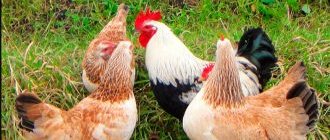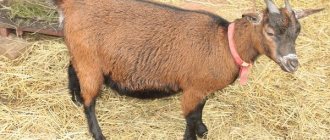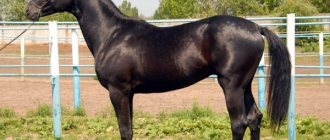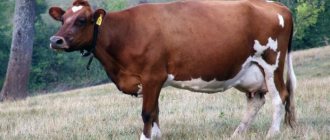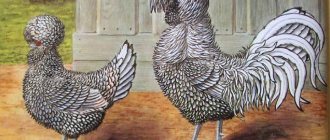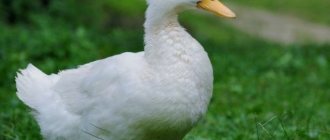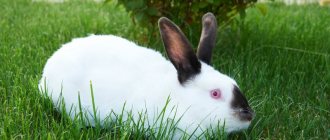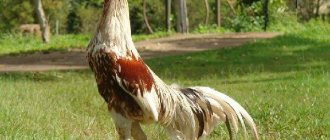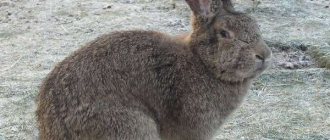Poultry farming » Chickens
0
1121
Article rating
Kira Stoletova
With good vitality, egg production and meat performance, the Kotlyarevskaya breed of chickens became popular among breeders and was bred in Kabardino-Balkaria. Several breeds were involved in the selection process - Holosheynaya, striped Plymouth rock, Zagorskaya salmon, New Hampshire and Russian white.
Description of the Kotlyarevskaya breed of chickens
Description of the breed
Once upon a time, in the mountainous expanse of the Caucasus, an interesting breed of poultry was bred - Kotlyarevsky chickens, which received their name thanks to the Kabardino-Balkarian plant. Here, local breeders, as a result of hard work, were able to develop a new meat-egg breed.
Nowadays, Kotlyarevskaya chicken has gained popularity all over the world.
Today this breed can be found everywhere: in European territory, in the homeland of chickens - in the Caucasus, as well as in Asia. Farmers have long appreciated the Kotlyarevskaya breed and call it universal. Basically, these chickens are needed to produce eggs and dietary meat.
Kotlyarevskaya chicken has a unique heredity. The best breeds of chickens were used to create it.
Main advantages of the breed:
- the individual is of medium size;
- on the head there is a massive bright red comb, leaf-shaped, and the lobes are white-red (if they are a different color, the chicken is discarded);
The comb on the head of Kotlyarev chickens must be red.
- the head is small, but the neck looks thick and short;
- loose plumage, which helps create additional visual volume;
- wide arched chest, strongly protruding forward;
- the back is also wide and slightly raised in the tail area;
- the tail and wings themselves are decorated with beautiful feathers, but the paws are completely bare and short;
- orange eyes.
Colors
The plumage of the Kotlyarevskaya breed ranges from a salmon tone to a brownish or even silver tint. The feather color of roosters is different from that of hens; it is much lighter than those of hens. Cockerels have black feathers all over the body and in the neck area. In rare cases, you can find a rooster with bright feather colors.
Roosters can be recognized by the characteristic patches of black feathers on their necks.
One-day-old chicks are fluffy and white, with black streaking throughout the plumage. You can compare them to baby chipmunks, they are so similar in color.
Video - Kotlyarevskaya breed of chickens
History of the origin of the breed
Breeders are working non-stop to create different universal breeds with excellent health and ease of care. Scientists get different results, but not a single result of creating chickens can be better than Kotlyarevskaya.
The breed got its name thanks to a plant in Kabardino-Balkaria. Today, the breed is being improved and its standards are consolidated at Genofond LLC. In the process of creating the Kotlyarevskaya, scientists used the following chickens: Zagorskaya Salmon, Russian White, Golosheynaya, New Hampshire and Striped Plymurka.
Kotlyarevskaya was created with the goal of producing chickens with excellent vitality, high egg production and high meat yield. Over time, the selection continued so that all existing characteristics became even better and of higher quality. Some claim that Kotlyarevsky chickens are meat-and-egg chickens, but in fact they are meat-and-egg chickens.
Chickens are not raised on an industrial scale, and indeed there are not many of them in villages. Purchasing chickens is an expensive business. The price is high due to the limited number of purebred chickens.
Onset of puberty
The Kotlyarevskaya breed enters sexual maturity quite early, about six months old. From this period, the chicken begins to lay eggs. If you artificially accelerate the onset of this process, then in the future this may affect the process of egg production. It will become much worse than the breeders intended it to be.
At six months, an adult female can weigh approximately 2.7-3.2 kg net weight, and a rooster can weigh up to 4 kg. The weight of one egg is approximately 63g. The white is very thick, the yolk is bright yellow and has a highly digestible nutritional value.
Kotlyarevsky chickens are distinguished by their excellent egg production
The egg production of this breed is excellent, an adult chicken lays up to 250 eggs per year, and a young chicken in the first year lays only up to 170 eggs. A high level of egg production persists for five years, then decreases. When a hen molts, she lays fewer eggs, since at this moment she needs vitamins and microelements to grow feathers.
Thanks to their genetic makeup, chickens have first-class immunity, so they rarely get sick. According to statistics, out of a hundred chickens, only 95 individuals remain, which in itself is good.
Chickens of the Kotlyarevskaya breed have good immunity, allowing them to survive
Farmers are increasingly interested in this beautiful breed. It is widespread throughout the CIS countries, but sometimes it is difficult to purchase day-old chicks or hatching eggs for breeding the breed.
Prices for a ready-made brooder for chickens
Chick brooder
Description of weight and egg-laying characteristics
Standard weight
According to the standard, the weight of a Kotlyarevsky breed cockerel must be at least 3.8 kg, and hens - 3 kg.
Currently, priority has shifted towards increasing the quantity of egg production and reducing the weight of poultry. Therefore, roosters are increasingly gaining a maximum of 2.8 kg, chickens - 2.3 kg.
The meat of Kotlyarev chickens has a delicate and appetizing taste and is considered a low-calorie product.
All about eggs
Chickens of the Kotlyarev breed begin to lay eggs at 6 months. Egg production per year is 170-220 eggs. Testicle weight - 56-60g. The shell color is beige. Eggs have a bright yolk with a rich and nutritious flavor.
Chickens lay eggs almost all year round, regardless of weather conditions.
The survival rate of Kotlyarev chicks is high, within 95%. In an adult bird this figure is 85%.
The productive age of egg production of chickens is up to 5 years. In the first year, a laying hen produces no more than 160 eggs. The peak occurs in the second year of life. In subsequent periods, egg production decreases, and at the 5th year of life it completely stops.
At the age of 4 years, it is rational to slaughter Kotlyarev chickens for meat, and replenish the herd with young laying hens.
Possible reasons for decreased egg production
The main reason for the cessation of egg production is molting. In adult Kotlyarev chickens, feathers change once a year, before the onset of winter.
Birds intensively shed old feathers and have an unsightly appearance. Molting takes place in 1.5-2 months, after which the chickens quickly restore egg production.
During the period of change of plumage, chickens of the Kotlyarev breed lose weight, their body weakens significantly. At this time, they should be allowed to free-range more often.
To maintain health, chickens are given: feed sulfur, vitamin supplements, feed with a high protein content: fish waste, worms, soy, dairy products, broiler feed. Additional protein should be no more than 5% of the daily diet of poultry, sulfur - 1 g per 1 kg of feed.
Other reasons for decreased egg production in Kotlyarev chickens: short daylight hours, birds are cold or hot, poor diet, obesity, stressful situations or diseases.
Details about feeding and keeping Kotlyarev chickens are written below.
Character of chickens
Breeders involved in developing new breeds of chickens believe that Kotlyarev chickens are quite peaceful creatures. But character, like that of people, here depends on gender and on the individual itself. Females may well fall into the hands of a person, but roosters will be wary or even cocky.
A bird of this breed usually does not run around other people's gardens; it will prefer to graze in the garden, where a spacious feeder with delicious food awaits it. Females are not good at flying, apparently due to their large weight. Unlike females, males can fly over a net or fence and soar to a certain height.
Roosters of the Kotlyarev breed tend to zealously defend their territory
Farmers have repeatedly noticed that roosters of this breed are jealous of their territory and will definitely show resistance to the enemy, especially the young breed. For this reason, for your own peace of mind and the peace of mind of the chickens, it is recommended to keep the Kotlyarev breed separately from their fellow tribesmen.
Feeding the chicks
There are no problems with the appearance of chicks. The babies are placed in a box with their mother hen and placed in a warm room. The chicks begin to be fed the usual food for chickens 15 hours after birth. But not all kids eat it. You can't leave them hungry, they will die. Therefore, the chicks are placed in a separate room and fed egg yolk mashed with milk.
If they cannot feed on their own, they need to be fed using a regular pipette. Very soon the babies will feel the taste of food and begin to feed themselves. They will happily join the rest of the chickens. The chicks are fed frequently, up to seven times a day. After two weeks, the chickens eat cereals, such as millet, and after a month they are already eating adult food. There are no strict rules for raising this breed. The main thing is to feed well, breeders share their experience.
Features of care and maintenance
The Kotlyarevskaya breed of chickens is not very demanding in care. Adults have a good appetite, peck at everything they give, do not overeat anything, and at the same time do not suffer from obesity. If a chicken is swimming with excess fat, it does not lay eggs well.
Feeding
With a good and balanced diet, the weight of an egg can reach 70g. Mixed feed, slightly moistened and mixed with food waste and boiled vegetables, is quite suitable for feeding. You can also add chopped grass there, and in winter - hay. With a sufficient amount of protein feed, the bird gains weight well.
With proper feeding, Kotlyarev chickens gain a healthy weight
Content
The optimal option for keeping the Kotlyarevskaya breed of birds is walking in a specially constructed aviary. The main thing is that it is high, since these chickens love to fly. In summer, you can cut off a little feathering on one wing so that there is no balance for flight.
The breed needs a separate walk, since roosters, and sometimes hens of this breed, can bully other inhabitants of the chicken coop.
Content Rules
Let's look at the basic rules for keeping chickens.
- In winter, chickens should be kept in an insulated chicken coop, although the breed itself is frost-resistant. When the outside temperature is down to -5 0C, a chicken or rooster can freeze its comb; this should not be allowed. The cold period of the year does not affect the process of egg production; it remains at the same level.
During cold seasons, it is important to maintain optimal temperature in the chicken coop.
- Walking occupies a special place in the reproduction of this breed. Fencing should be done to prevent chickens from running away or pecking at neighbors’ gardens. The bird is quite peaceful, but in crowded conditions its aggression can manifest itself.
- Monitor the condition of the litter and change it promptly. The best option is peat litter, as it can last much longer than other options. In addition, peat perfectly absorbs moisture and reduces the risk of parasitic infection.
Timely change of litter will prevent the proliferation of bacteria and parasites in the chicken coop
Subtleties of content
Inexperienced poultry keepers can own this breed without fear. Kotlyarevsky chickens are not demanding in care, they do not need special food, and they almost never gain weight.
Diet
A properly selected diet can help the breeder get an egg weighing approximately 70 g. In summer, food differs from the winter version. During the winter season, breeders add more mineral supplements and nutritional components to the diet. The food used is dried grass, pine or grass flour. In the summer, the main food for chickens is greens and pasture.
The second difference between the winter menu and the summer menu is the amount of food. In winter it should be 10% more. This is due to the fact that chickens spend a huge amount of energy on heating their bodies.
A particularly favorite dish of birds is wet mash. They are easily digestible and chickens eat them with pleasure. Another additional advantage is that the poultry farmer can add any vitamin and mineral powder mixtures to them. Wet mash provides the body with energy and strength for the whole day. It is better to give them to birds for breakfast.
Adult chickens are fed 2 or 3 times a day. At least 3 times during the winter season. In summer you can feed twice only if the birds can eat greens and food in the open air.
The basis of the diet of all chickens is grain crops. The main place is occupied by wheat and oats, and we should not forget about cereal crops. Feathering helps to restore sunflower seeds, they are best given during the molting period.
Chicken coop structure
If you live in a warm climate, you may not want to build a heated chicken coop. It is necessary to make a room with a roof for the chickens, and in the cold season provide them with a large amount of food so that the birds can generate a lot of energy and strength to warm themselves.
We recommend reading the article on how to make a chicken coop yourself.
The floor covering is covered with a special heating material, for example, straw or peat. In winter, you need to lay a warm bedding, which itself will serve as an excellent source of heat. Sawdust or peat is turned over from time to time and more is added.
A chicken coop should not exist without perches; it is better to make them from boards. Place the perches low from the floor so that the birds can easily climb onto them; do not forget that they do not like to fly.
Nests must be installed in the chicken room so that the birds can lay eggs. Their number depends directly on the number of hens, but for 5 females there should be 1 box with nests; if possible, their number is increased. Hay or straw is placed in the boxes; there is no need to leave them naked; birds can abandon such nests altogether and lay their offspring in another place.
Walk
Having a walking yard is a must, as representatives of the Kotlyarevskaya breed love fresh air and walks, although they do it very slowly. Greenery should grow in the yard: clover or alfalfa, which will serve as excellent food for birds. The yard is fenced on all sides with netting to prevent birds from getting into the territory of other animals. And other animals, in turn, did not infect the Kotlyarevskaya chicken breed with viruses and infections.
Feeders and drinkers
Basic requirements for feeders and drinkers: comfortable, spacious and easy to clean. Such containers are installed in the walking yard and in the chicken room. The number and size depend directly on the number of birds. Read about making drinking bowls with your own hands here.
There is about 0.1 m of feed strip per bird. The drinking bowls are made stable and comfortable. You can use plastic bowls and enamel buckets. If you have the opportunity and the necessary material, you can make containers for water and food with your own hands. Read the additional article on how to make your own chicken feeder.
Using a siphon drinker is justified if you have no more than 12 chickens. It is a glass with a siphon system and a container for water intake.
Shedding period
Every year, laying hens enter a difficult stage in their life - molting. People suffer from boredom and despondency in the fall, and chickens begin to lose their feathers; this process is associated with a decrease in daylight hours. During molting, birds stop producing eggs.
This is a normal phenomenon and does not cause any health problems. There are cases when laying hens cannot shed on their own, they have to be helped with this.
Only a veterinarian can prescribe forced molting; there is no need to “torment” the chicken yourself.
Breeding
Due to the fact that Kotlyarevskaya chickens are not particularly good mothers, their eggs are placed under other hens (of a different breed) for hatching, or a special incubator is used.
The appearance of chicks is a very anxious and important moment; you should prepare for it in advance so that the young do not die, since the chicks are very vulnerable and sensitive, any wrong movement can cause them irreparable harm.
As for appearance, the chicks of the Kotlyarevskaya breed do not differ from each other. They are born white or yellow. There are also representatives with 2 black stripes on the back. All striped ones are hens, chicks with a single color are future cockerels.
The weight of a chick at the age of one day is no more than 40 g. However, this does not last long; the bird gains weight very quickly, especially with a high-quality and balanced diet. 30 days after birth, the young already weigh 350 g, after 1.5 months - 500 g.
Chick care
Young animals of the Kotlyarevskaya breed are very sensitive to temperature changes. Any climatic difficulties should be avoided so that the babies do not die. 1 day before the birth of the handsome ones, start preparing a “home” for them.
When breeding birds in large numbers, special systems and equipment are used, but this is not necessary at home. If the room for raising young animals is a box, then dry bedding is laid on its bottom. A lamp and an electric heating pad are installed near the “house”.
One of the main components in caring for chickens is a well-chosen diet. It ensures good growth and development of young animals. Particular attention should be paid to protein products, as thanks to them, muscle tissue, which is necessary for young animals, quickly grows. For the first 10 days, food stops at boiled eggs, low-fat cottage cheese and cereals. After some time, coarsely ground combined feeds are added to the menu.
The temperature regime does not differ from what is required for other chicken breeds. Newborn chicks should live at a temperature of +32 degrees Celsius. The optimal humidity level is 55%. This requirement is relevant for the first 7 days, then the indicators are reduced by 2 degrees every 6 days.
Sanitation must be at the highest level; this rule is relevant not only for children, but also for adult poultry. However, chicks need cleanliness more than adults, since their immunity is just beginning to form; any bacteria and infections can weaken it.
You can improve the health of your chicks from birth by gradually adding vitamins and minerals to their diet. For example, fish oil and yeast, ascorbic acid. Feed with feed mixtures that contain vitamins.
Diseases
The Kotlyarevskaya chicken does not get sick often, but if its health declines, the source is parasitic infections. This only happens if the hen has not been vaccinated.
The survival rate for chicks and adult chickens is about 93%; for birds this is a high figure. If a poultry farmer takes all preventative measures to care for his birds, then he will not face serious problems with laying hens.
Puberty and egg production of chickens
The main positive characteristic of the Kotlyarevsky breed is the rapid development and gain of muscle mass. At just six months, hens can reach 3 kg of live weight and lay eggs. The regularity of laying eggs is developed gradually, increasing in quantity.
Egg production
At first, one gets used to the natural process, so minor interruptions may occur. Once the female is fully mature, she can lay eggs daily. Pauses in laying eggs occur only during the period of replacement of the feather base of chickens. In winter, in an insulated chicken coop, the bird produces the same level as in summer.
One adult Kotlyarevskaya breed can lay up to 250 eggs per year
Incubation
In breeding work, the main mistake that is often made is the loss of natural instincts in the bred chicken breeds. An unselected chicken can quietly hatch its offspring, unlike a genetically created individual. Indeed, in wild conditions the instinct of self-preservation in birds is well expressed.
But in hybrid chickens it is significantly reduced or completely absent. It can be difficult to find a good hen among the Kotlyarevskaya breed. If she sits on eggs, she cannot always sit for three weeks and runs away from the nest. For this reason, the breed is bred mainly using an incubator, or eggs for hatching are placed on hens of a different breed.
You can either purchase an egg incubator or make it yourself
Despite the frequent reluctance of hens of this breed to hatch their chicks, you can teach them this skill. You can read more about what maternal instinct is and how to awaken it on our portal.
We'll talk about how to make your own incubator for Kotlyarev chickens below.
DIY chicken incubator
Prices for egg incubators
Egg incubators
Chickens of the Kotlyarevskaya breed of chickens
After a chicken hatches eggs, fluffy lumps begin to appear within three weeks. Chickens are characterized by a variegated color, mostly dark shades with black streaks. Let's look at the main characteristics of chicks and methods of raising them:
- in females, dark stripes are often located along the ridge, and in males - on the wings in the form of spots. Reliable sex determination can be made when the chicks are one month old;
- By nature, the chicks are quite lively and curious. Until the babies reach three months of age, they are kept in brooders, and then they can be introduced to adults;
Chick brooder
- chicks are raised at a temperature not lower than +300C, lighting is standard. There should only be one breed in one brooder to prevent pecking. To avoid such a precedent, it is necessary to give the chickens “Aminovital”;
- if a chicken is sick, it should be placed separately to avoid an epidemic. A healthy chicken is mobile, its wings fit tightly to its body, its plumage is clean, and it stands firmly on its legs.
Chickens of the Kotlyarev breed
According to poultry farmers and farmers, the Kotlyarevskaya breed of chicken is highly valued for its dietary meat and the quality of its eggs, which have a highly digestible nutritional value. The breed is also valued for other reasons, for example, for its good immune system, fertility, peaceful nature and rapid weight gain during fattening.
Chick care
Small chicks are given their first food 12 hours after they are born. They actively pounce on food, only a small percentage of them stand aside, ignoring food intake. They need to be monitored; if the chicks continue to refuse food, they are separated and fed finely mashed yolk for the first few days.
Chicks that are indifferent to food in the first days of life should be given the yolk in small portions
Chickens of this breed have good immunity and a high level of health. To ensure that the chicks do not get sick and survive, you must adhere to simple rules. Let's look at them:
- Chickens are very sensitive to temperature changes. If they were born by incubation, it is recommended to take care of additional heating in advance. After all, in nature the chicks are warmed by the female. At home, you can artificially create such conditions - build a simple box and heat the chicks with a lamp on top;
- chicken feed must contain microelements, proteins, fats and vitamins necessary for normal development. Boiled yolk, steamed millet, cottage cheese are suitable for this;
Cottage cheese will provide the chicken with the necessary nutrients
- The humidity of the room where the brood is growing should not exceed 50%. It is not recommended to allow the greenhouse effect and to ventilate the room more often, and at the same time ensure that there are no drafts;
- it is important to monitor sanitary standards of maintenance, often change the bedding in the box or box where the chickens are kept in order to avoid their infection and the occurrence of epidemics among the young;
- For preventive purposes, chicks are given immune-strengthening supplements. From the very first day, the chicken should receive minerals, fish oil, and vitamins important for the development of the body.
Breeding Features
For maximum egg fertilization, families are formed from one adult cockerel and 7-12 laying hens. Kotlyarev hens have a weak instinct for hatching chicks, so an incubator is used, or eggs are placed under a hen of a different breed.
In a small farm, it is rational to use an incubator of your own making: from a non-working refrigerator, wooden or plastic box. Briefly, the device consists of a sealed box with insulated surfaces, lighting lamps, heating elements, a ventilation system in the form of a low-power fan and trays for laying eggs.
Description of incubation: eggs of medium size, without shell defects, with a shelf life of 2 to 7 days at a temperature of 10-18 degrees are selected for placement in the incubator. Before laying, the eggs are checked with an ovoscope for the presence of an embryo.
To disinfect, before incubation, eggs are wiped with a rag soaked in a solution of potassium permanganate or hydrogen peroxide.
Table of incubation modes:
Construction of a chicken coop and surrounding area
The chicken coop should be warm and cozy. In winter, chickens should not freeze; in other periods, they should not get wet in the rain or overheat in the heat. A canopy is installed on the walking area so that the chickens can hide from the rain, and also to prevent water from running into the feed. Provide food and water in sufficient volume and quantity.
The size of the chicken coop should correspond to the number of chickens kept. The size of the chicken coop should correspond to the number of chickens kept.
The floor is covered with a bedding of straw, peat or large sawdust. In winter, the litter is laid in a thicker layer than in summer. When overheated, it will give off heat, and the chickens’ paws will not freeze. It is recommended to move the top layer of litter from time to time to allow it to breathe a little. It is also necessary to add a fresh portion of the flooring.
For chickens to spend the night in the chicken coop, special perches made of boards and strong sticks are installed. They are installed at a certain distance from the floor, about 50 cm.
Video - Winter chicken coop from the inside
Egg nests
Nest boxes simply need to be placed in the chicken coop so that the chicken has somewhere to lay an egg. The number of nests is calculated by the presence of laying hens in the room. The calculation is as follows: there are up to five hens per nest. A small bedding of hay or straw must be placed at the bottom of the box.
An example of nest design for laying hens
Prices for a nest for laying hens
Nest for laying hens
If there are few nests, you need to increase the number, since the chickens will scatter eggs throughout the territory, and later they themselves will drink them. It will be quite difficult to wean them off this process later.
Walk
The area for walking the Kotlyarevskaya breed of chickens should be spacious, fenced with a high fence, so that the bird cannot fly away for a walk in other people's gardens. Clover and alfalfa are planted along the edges of the mesh - these plants will be additional food for the chickens.
Planting clover is an excellent way to supplement chickens without any expense.
Feeders and drinkers
To feed domesticated poultry, comfortable feeders should be equipped, and drinking bowls should be provided for water. They should be safe to use, light in weight and spacious. It is recommended to disinfect the container from time to time. Install feeders in the place where the chickens walk.
For drinking, drinking bowls are installed; they should be stable and convenient. The simplest option is a plastic bowl, galvanized or enameled bucket or basin. The container can be purchased at a specialized store or made by yourself.
Drinking bowls are usually made from scrap materials
Let's consider what material the feeder should be made from.
- from boards. Such containers are designed for supplying dry food, such as compound feed, grain crops, shells, chalk and other mineral additives;
- A plastic feeder or iron bowl is needed for moistened food. Such dishes are easy to wash afterwards;
- from large mesh or rods. This feeder is used for feeding chickens with fresh herbs.
Table 1. Types of chicken feeders
| Feeder | Description |
Feeder in the form of a tray | It is a flat container with sides located on the sides. The sides serve as a kind of barrier to prevent the chicken from scattering feed from the dish throughout the poultry house. Most often, such dishes are used for feeding chickens. |
Container similar to a gutter | Place a fence behind a mesh so that the bird does not scatter food while paddling with its paws. This type of feeder can have a couple of compartments for different types of food. To pour feed to the chickens, you don’t need to go into the poultry house itself. |
Hopper feeder | Used for dry food. This is a very convenient way of feeding. For example, a person poured food into a bunker in the morning and went to work until the evening, without worrying that his bird would be hungry at that time. As the grain is eaten, it will gradually fall down and the chickens will have enough food for the whole day. |
Description of conditions of detention
Freedom and light
Kotlyarevsky chickens are not demanding in terms of living conditions. Birds are kept on the floor in closed poultry houses.
Stocking density: 5 heads per 1 m2 of floor. In a chicken coop, chickens should feel free; if they are densely populated, they can become aggressive.
The length of daylight during the egg-laying period is up to 14 hours, in winter - at least 12 hours.
Creating a climate inside the chicken coop
When building a poultry house, heating blocks made of gas and foam concrete, adobe or brick, and a two-layer roof with an insulating layer are used.
Temperature in summer is 16-22 degrees, in winter - 12-15 degrees.
For heating in winter, infrared heaters or lamps with infrared radiation are installed in the poultry house. Advantages of IR lamps: they quickly heat up the surface, are not afraid of shocks and water splashes, and their service life with continuous burning is higher than that of incandescent lamps.
The same IR lamps are used to lengthen daylight hours in winter; they can not be turned off around the clock, since red light does not irritate the bird.
Air humidity – 60-70%. Deviations from the norms can lead to: with low humidity - the development of microbes, with high humidity - dampness, the appearance of fungus, moisture in the feed and bedding.
The main methods of control are insulation and adequate ventilation of the poultry house.
Ventilation and insulation of the floor
For ventilation the following are used: in summer - open doors, vents on the same wall as the door. In winter - a mechanical supply and exhaust pipe system with valves. It works according to a schedule: 10 minutes on, 40 minutes off.
Chickens of the Kotlyarev breed are very sensitive to drafts. More often they occur with poorly installed doors and windows. In drafts, chickens lose their feathers, get sick and die.
To insulate and remove moisture, bedding is laid on the floor. This can be sawdust, shavings or wood chips, peat, less often - straw cuttings, grass hay. The thickness of the litter in summer is 5 cm, in winter up to 15 cm.
In a small chicken coop for 10-20 birds, the layer of sawdust is changed 2 times a month. In winter, during frosts, the litter is updated by adding a new layer and changed with the onset of thaw.
Equipment
Poultry house equipment: nests - one for 5 laying hens, perches at a height of 80 cm from the floor level, tray feeders for dry and wet food, gravel, nipple drinkers.
An important element of chicken life is baths with ash, sand and clay. By bathing in the mixture, chickens remove mites, lice and parasites that may live on their feet and feathers.
To avoid the spread of parasites, it is necessary to regularly burn the feathers from the bath, and change the filler as it becomes dirty.
Description of basic disinfection methods
To prevent diseases of Kotlyarev chickens, disinfection is carried out:
- planned - 2 times a year: whitewashing walls and ceilings with lime, using sulfur or iodine bombs;
- preventive - once every 2 months, before moving in: with bactericidal and fungicidal preparations (chloride Glutex, Ecocide S, Delegol);
- at the first signs of parasitic and infectious diseases of poultry: a solution of bleach with water (1 to 5).
The greatest efficiency is observed with fine drip irrigation of all surfaces; washing gives good results.
The fumes from the checkers are very harmful to the body of chickens, therefore, before moving them in, the room must be ventilated for several days.
Walks
Considering that Kotlyarevskaya chickens fly well, they need an aviary. When walking, their wings are clipped or a solid cage enclosure is arranged. Cage height: 2.5-3 meters. The top of the enclosure is covered with a metal mesh or a flat slate roof.
The walking area for Kotlyarev chickens is equipped with feed trays, drinkers, ash trays, and additional feeders with gravel and sand. Walking area: 2 m2 per 1 bird.
Chickens of the Kotlyarev breed can easily withstand cold weather. But at a temperature of -5 degrees, it is better not to let the birds go outside, otherwise they may freeze their scallops or catch a cold.
Advantages and disadvantages of growing
The Kotlyarevskaya breed of chickens has a number of advantages, as well as minor disadvantages. Let's look at each one separately.
Advantages:
- health. Even day-old chicks can boast of a good immune system and survival rate. Chickens of this breed are strong and have the ability to fight many diseases that affect birds. Almost 90% of individuals survive to adulthood;
- economical maintenance and care. Chickens love to graze outside and have a good appetite, so they are happy to sweep away any food prepared for them in the blink of an eye. This meat-egg breed of chicken is easy for farmers to raise;
Kotlyarevsky chickens are unpretentious and consume almost any food
- demand. The Kotlyarevskaya breed of chickens has become quite popular among farms and households in recent years. Chickens at fairs are sold out instantly;
- performance. By the age of six months, a chicken can weigh up to 3 kg and lay fairly large eggs;
- meat. The Kotlyarevskaya breed is famous for its very juicy, soft and dietary meat.
Flaws:
- quite difficult to buy, as chicks are bought up very quickly;
- The hen has poor maternal instinct.
Kotlyarevsky chickens lay eggs well, but they have problems with hatching offspring
Reviews from owners of Kotlyarev chickens
Irina Pererva, Mytishchi
Almost ideal chicken for a private home. Lays very large eggs and lives for a long time. Roosters gain weight quite quickly and the extra ones can always be put into soup. To prevent them from flying around our neighbors, we made them an aviary with a roof. Now the chickens roam all day, year-round. The only thing is that in winter they need to artificially lengthen daylight hours so that they continue to lay eggs. But this is true for all breeds.
Kristina Dolgaya, Pavlovo
I am very pleased with this breed. They run great. The neighbors are begging to buy chickens, they look very beautiful. So the breed is simply wonderful for selling eggs and chickens. Besides, I really like Kotlyarev’s roosters. They are very polite with chickens, when they trample they do not cause damage, like my previous ones. And the fertilization rate of hens by Kotlyarev roosters is very high.
Buying Kotlyarevsky chickens
Many farms are engaged in breeding the Kotlyarevskaya breed of chickens. Usually they breed several breeds at once, which can subsequently lead to the elimination of a pure breed. The question arises where you can buy young animals of this breed or eggs for an incubator.
Most often, chickens of the required breed are purchased from small enterprises that specialize in breeding one or another valuable breed of birds. You can also buy Kotlyarev chickens from a private farmer, it will be much cheaper.
Buying Kotlyarev chickens from private farmers will be cheaper, but will involve a number of risks
Ecofazenda is popular. You can also purchase chickens at the Mozhaisk Private Compound farm, which is located in the Mozhaisk district.
Nutrition of adult birds
The Kotlyarevskaya breed of chickens is an excellent choice for those who decide to engage in industrial farming of this bird, because it is unpretentious in food. For chickens, it doesn’t matter what to eat, the main thing is that there is a lot of food. To feed them, bulk feed with a high protein content is used. The diet consists of small potatoes, other vegetables, grains, herbs, and kitchen waste. Chickens eat a lot, and accordingly, their weight is growing rapidly. Poor appetite is a sign of some disease. It is worth paying attention to this and, if necessary, taking appropriate measures.
In the warm season, finely chopped green grass is added to the nutrient mixture. In winter, the food is different. Chickens are content with grass meal; dry food must be diluted with water, decoctions or low-fat broth. To avoid a lack of vitamins, fish oil and multivitamins are added to the food.
Adults need to be fed at least four times a day. If there is food left in the feeders, it is better to remove it so that it does not spoil. Otherwise, the chickens will get hungry again and eat the spoiled product.
Regarding the drinking regime. The water in drinking bowls needs to be changed frequently to ensure it is always fresh and clean. It is unacceptable to allow bacteria to grow in it.
Productivity
Hens are excellent layers, reaching sexual maturity at 6 months of age if given adequate nutrition. Every year you can get up to 240 selected eggs from one individual. Oviposition is daily, breaks are possible only during molting and in the presence of severe frosts in the cold season. Molting is a normal physiological process and begins simultaneously with a decrease in daylight hours. Sometimes birds cannot molt and change their plumage on their own. In this case, the method of forced molting is chosen by the veterinarian after a mandatory examination of the entire herd.
If you keep birds in a well-insulated house, you can get high-quality eggs every day, even in severe winters. The egg production of two-year-old hens is one third lower than that of young laying hens. Laying hen eggs are covered with a bright beige shell. The average weight of each is about 60 g. Laying hens occurs in a comfortable and well-equipped nest; there are no problems with this process, since the birds are smart and quickly understand what is required of them.
What to feed the breed?
Birds of this breed should be fed with ready-made feed or mixed cereals. It is advisable to use a composition based on bran, wheat, buckwheat, oats, and corn. It is recommended to add additional vitamins and minerals to this mixture. This will help make your bones stronger.
It is also recommended to give birds coarse salt and ash. They need gravel for better digestion of food. Boiled fish and beans should be used as sources of protein. Meal and sunflower seeds are also added to the mixture.
In summer, representatives of this breed can be free-range. This will help reduce food costs by more than 2 times. Birds eat greens well, which serve as a source of vitamins. It is recommended to harvest dry grass for the winter.
The walking area should contain a lot of greenery - alfalfa, clover. The grass will become a source of nutrition for the birds and will help reduce the amount of dirt in the poultry house.
Breed standard
Kotlyarevsky laying hens have a variegated plumage color. There are two main types: partridge and banded. The standard allows for salmon, silver and light brown shades. Birds with dark brown plumage are discarded.
We will give a more detailed description especially for farmers.
Chickens have a bright red comb and lobes. Their metatarsals are colored yellow, and the skin of their legs is not covered with feathers. The birds have large, bright orange eyes. The body is powerful and squat, the wings are tightly pressed, the chest is convex and rounded. The straight back is slightly raised near the tail. The neck and head are medium in size. The paws are painted a dirty yellow, as is the curved beak. An adult rooster usually weighs up to 4 kg, a chicken - no more than 3.5 kg.
Kvochkas have a calm and friendly disposition. They are willing to make contact with people. They can be kept in a chicken coop together with other breeds. Chickens are inactive, do not really know how to fly, and do not strive to do so. Birds are not prone to escaping or destroying beds. They don't get into fights or make a lot of noise.
Breeding Kotlyarevskaya breed of chickens
Kotlyarev chickens are considered bad hens. Therefore, an incubator is required for breeding offspring. The eggs of chickens of this breed are even in size. Farmers do not recommend using specimens that are too large, since they often hatch into chicks with defects.
It is recommended to place medium eggs in the incubator that were collected before 18 hours. They should show no signs of damage.
After 3 weeks, the chicks appear. They are predominantly grayish or light brown in color. Females have dark stripes along the spine; males have spots on their wings. However, it will be possible to accurately determine the gender only after 3 weeks.
Immediately after hatching, chicks are active. It is recommended to keep them in brooders, separated from adult birds. The room must be maintained at a suitable temperature. Poultry boxes must have additional lighting sources.
After 8-10 weeks, the birds can be gradually introduced to adult chickens. It is recommended to monitor joint walking. Adults can show aggression towards young ones.
